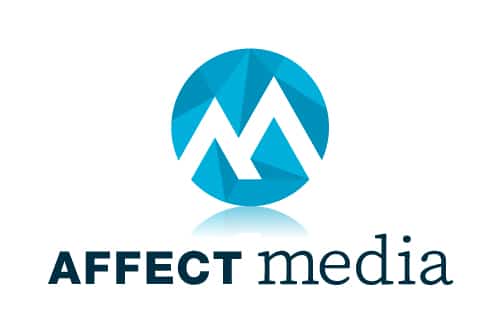
Here are our top 3 tips for doubling medical referrals to your practice:
Tip one: Build relationships
Good relationships are the foundation for all referrals. Doctors will naturally choose to refer to professionals that they like and trust. While being competent and skilled is essential, ‘trust’ is the most important factor in gaining medical referrals.
Strong personal relationships take time and attention to grow and maintain. If you want a doctor to trust in your ability to successfully treat their patients, they need to know you.
Medical professionals need to be confident that their referral to you will benefit their patient. The ideal place to start building relationships with doctors is by identifying how you can best serve this need. Reach out to potentially referring doctors and learn about what they require. Identify the ways you can deliver the kind of patient care the doctor will value most, and educate the doctor of your services.
Through regular communication and ongoing experience working together, you will become a valuable asset to the doctor. Doctor’s will refer with confidence when there is a strong and reliable relationship in place.
Tip two: Prioritise your referral sources
Prioritising your referral sources ensures you get maximum returns on your relationship building effort.
Through prioritising, the majority of your effort and energy will be spent on the relationships most likely to give you the referral returns you are after.
Sort your referral list into four categories (A, B, C and D) according to how many patients they currently refer, how many more they could refer, and the quality of their referrals.
A: The A’s are your highest priority referrer. They consistently refer patients who are a good fit for your skills and services. You have established trust and credibility with this referrer through previous work with them.
B: B’s are good referrers with potential to grow. These referrers already like and trust you. Educating them about the services and procedures you offer could increase their rate of referral to you.
C: C’s send you referrals from time to time but are not consistent. These referrers don’t have a good understanding of your skills and services. With some effort they could become better referral sources.
D: Ds have the potential to refer patients to you but are unlikely to do so due to their location, contractual obligations or speciality.
Many new practices make the mistake of directing our time and attention towards C and D referral sources believing that more referrals will come if they cast the net wide.
A far better use of effort and energy is to invest it in the relationships that are the most profitable to your business. Your strongest relationships take less time, money and resources to maintain, while returning you the highest referral rate.
It makes sense to nurture your A and B referral sources. Lower priority referral sources can be pursued at a later stage as time and money allows.
Tip Three: Protect your referral sources
Your best referral relationships are your biggest asset. Typically a practice will receive more than 2/3rds of its business from a small number of top referrers. It’s important never to take these top referrers for granted. Your business depends on them.
Your “A” referrers need to be kept happy and informed. Maintain regular communication and update them regularly about any new developments in your organisation. These top referrers deserve the majority of your Professional Referral Program resources.
Remember that competitors are always eager to poach your best referrers from you. Make sure your best referrers know how much you value them, and reward them appropriately for their continued relationship with your practice.
Always be careful not to overestimate the strength of a referral relationship. Treat it like a plant and water it regularly. If neglected, the referral relationship will wither and die. Once a referral relationship is damaged, or snatched by a competitor, it is often too late to be able to recover what has been lost. Be proactive and protect your best referral sources with regular attention.
What’s next?
Need a hand getting this done? Fill out the form below and we’ll call you for an obligation free chat.
Want to build your practice?

If you or someone you work with is involved in advertising or promoting the services of a registered health practitioner in Australia, it’s essential that you understand the legal obligations that health professionals must comply with when advertising.
Australian National Law regulates and restricts advertising by health services. As a health practitioner you need to ensure your advertising complies with the National Law and other relevant legislation.
What is the purpose of AHPRA’s Advertising Guidelines?
AHPRA’s advertising guidelines are there to help you get things right when advertising. They make your legal responsibilities clear by explaining the National Law’s advertising requirements.
The guidelines provide useful descriptions of the kinds of advertising that is prohibited, and advise on the use of factual information in advertising. The regulations for advertising products and therapeutic goods at your health service are discussed.
AHPRA’s guidelines also inform you of consequences and penalties that apply if you breach the advertising requirements.
What principals underpin the AHPRA Advertising Guidelines?
AHPRA maintains that advertising by health services needs to be in support of consumers and the public interest.
When you advertise correctly it is a useful way to communicate the health services you offer to the public. Good advertising should help consumers to make informed choices.
Advertising should not contain false or misleading information, as this may compromise a consumers’ health care.
Nor should advertising compel consumers to purchase or undergo a health service that they do not need or require. This is not in the public interest.
What do I need to do?
When advertising your health service, you need to ensure you comply with all relevant legislation. Reading AHPRA’s guidelines can help you do this.
You should also get in touch with the National Board for your own profession. They will have a ‘code of conduct’ document that describes the professional standards expected of practitioners, including when advertising. Make yourself familiar with this code and apply it.
What happens if I breach these guidelines?
A breach of advertising requirements is a criminal offence, and hefty fines apply.
A court may impose a penalty of up to $5,000 for an individual, while a body corporate can be fined up to $10,000.
As a registered health practitioner, you could also face disciplinary action for unprofessional conduct in relation to advertising.
It is well worth your time and effort to ensure your advertising meets the necessary requirements.
Want to build your practice?

If you or someone you work with is involved in advertising or promoting the services of a registered health practitioner in Australia, it’s essential that you understand the legal obligations that health professionals must comply with when advertising.
Australian National Law regulates and restricts advertising by health services. As a health practitioner you need to ensure your advertising complies with the National Law and other relevant legislation.
What is the purpose of AHPRA’s Advertising Guidelines?
AHPRA’s advertising guidelines are there to help you get things right when advertising. They make your legal responsibilities clear by explaining the National Law’s advertising requirements.
The guidelines provide useful descriptions of the kinds of advertising that is prohibited, and advise on the use of factual information in advertising. The regulations for advertising products and therapeutic goods at your health service are discussed.
AHPRA’s guidelines also inform you of consequences and penalties that apply if you breach the advertising requirements.
What principals underpin the AHPRA Advertising Guidelines?
AHPRA maintains that advertising by health services needs to be in support of consumers and the public interest.
When you advertise correctly it is a useful way to communicate the health services you offer to the public. Good advertising should help consumers to make informed choices.
Advertising should not contain false or misleading information, as this may compromise a consumers’ health care.
Nor should advertising compel consumers to purchase or undergo a health service that they do not need or require. This is not in the public interest.
What do I need to do?
When advertising your health service, you need to ensure you comply with all relevant legislation. Reading AHPRA’s guidelines can help you do this.
You should also get in touch with the National Board for your own profession. They will have a ‘code of conduct’ document that describes the professional standards expected of practitioners, including when advertising. Make yourself familiar with this code and apply it.
What happens if I breach these guidelines?
A breach of advertising requirements is a criminal offence, and hefty fines apply.
A court may impose a penalty of up to $5,000 for an individual, while a body corporate can be fined up to $10,000.
As a registered health practitioner, you could also face disciplinary action for unprofessional conduct in relation to advertising.
It is well worth your time and effort to ensure your advertising meets the necessary requirements.
